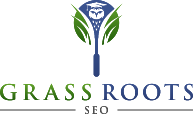Internet Marketing Basics
ONLINE ADVERTISING BASICS – GRASSROOTS SEO 101
Here’s some old school information on internet marketing basics, or grassroots seo 101. Online advertising offers advertisers, both online and offline, an opportunity to reach very specific niche audiences and target markets that wasn’t previously possible outside of perhaps the niche and trade magazine market. The biggest difference between niche online advertising and niche print advertising is often cost. Online advertising options are often more affordable, and with new niche websites launched every day, online advertising opportunities are almost endless.
There are many different types of online advertising, from blatant advertising to subtle, seemingly natural links. Here are several common types of online advertising currently used:
1. Banner Advertising – Banner ads are image ads with a company’s or website’s logo, slogan, and advertising message (or something similar) included. Banner ads come in many different sizes, which would be determined by the space available on the publisher’s site where the advertising space is being purchased. Some banner ads are animated.
2. Sponsorships – Advertisers regularly gain exposure in online sponsorships, whether that’s sponsoring a site blatantly for a site-wide text link or banner ad, sponsoring online videos (or even limited commercial sponsorships with major TV networks offering videos online), or sponsoring something such as a free Web template, where the sponsorship link stays in tact every time a template is used.
3. Text Link Advertising – Text link ads can work similarly to banner ads, they can be site-wide links in the sidebar, footer, or other area of a publisher’s website, or they can be a text link worked into the content on one particular page on a publisher’s site.
4. Video Advertising – Video advertising can be done similarly to banner advertising using various video screen sizes, or can involve blatant advertising in essentially Web commercials released with some kind of entertainment value to video sharing sites, hoping for a viral effect of the video being shared to increase exposure.
5. Email Advertising – Email advertising is essentially purchasing banner or text link ad space within email newsletters reaching a certain target market.
6. Pay-Per-Click (PPC) Advertising / Search Engine Advertising – Pay-per-click advertisements can be purchased in text or image / banner formats, often through search engine advertising (to place in sponsored results for certain keyword phrases) or through ad publisher networks such as Google Adsense, where ads appear on publisher sites relevant to chosen advertiser keywords.
7. Online Classifieds – Online classifieds advertising works much in the same way as offline classifieds, where products, jobs, and more can be advertised to a more general market.
8. Pop-up / Pop-under Advertising – These are online ads that open a new window on a browser’s computer screen when they enter or leave a Web page or click on something. They’re often considered intrusive, and blocked automatically using pop-up blockers by many users.

A seasoned digital marketing professional with over 20 years of expertise in digital marketing, search engine optimization, search engine marketing, brand development, conversion optimization, lead generation, web development and data analytics. He is a strategic digital marketing thought leader in a multitude of business verticals including automotive, education, financial services, legal marketing and professional services.
